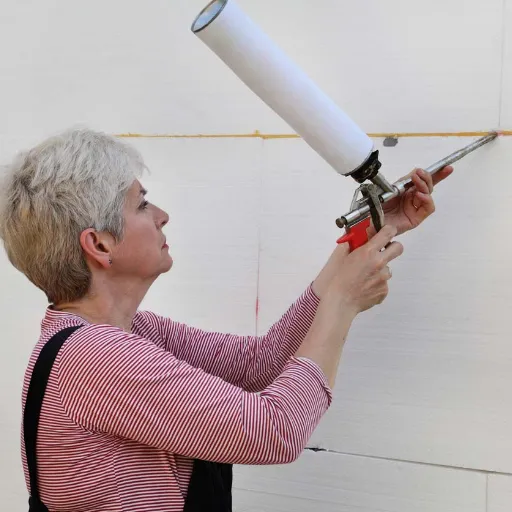While working with drywall, the most common argument that comes up is whether one must use drywall adhesive or simply nail them with screws. Both have their pros, but if used at the right time and for the right purpose, drywall glue can really get the finish down with strength and elegance. This blog post will take you through the tips to consider when choosing between these two options so you can save time, avoid issues, and increase the overall strength of your job. Whether you are a contractor or just a DIY person, you will be able to make confident use of the knowledge offered by this guide in your next drywall installation. You will walk away learning about the situations in which drywall glue should really be put to use and how it can make a difference in your working efficiency.
Understanding Drywall Adhesive
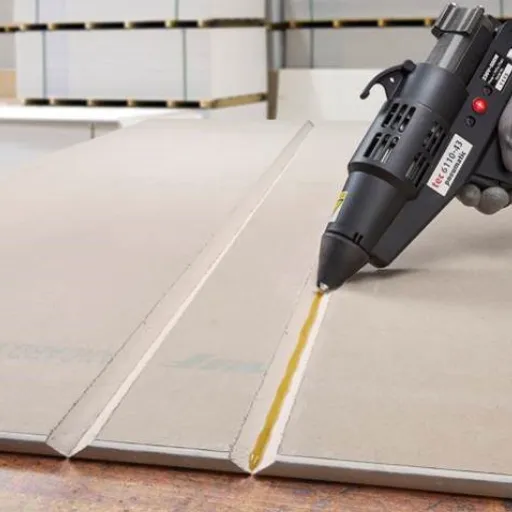
What is Drywall Adhesive?
Drywall adhesive comprises a resin system that is specially formulated to adhere drywall panels securely to framing or substrates, such as wood or metal studs. It is used to provide a strong and durable hold during drywall application so that more screws or nails are rarely necessary, while at the same time preventing any shifting or unevenness of the drywall surface.
Another huge benefit of drywall adhesive is that it evenly transfers load across the drywall surface. This, over time, prevents cracking, popping, or any warping of the drywall, now all of them are going for a smooth finish with longer life expectancy. The drying adhesive further speeds up the installation process as it reduces the number of fasteners needed, thus saving time and effort.
Drywall adhesive typically gets applied by way of a caulking gun or some similar tool to the studs or surfaces against which drywall will be mounted. Proper techniques of application must be followed, such as using the right amount of adhesive and ensuring surfaces are clean, in order to get a good bond. When used properly, drywall adhesive helps improve installation speed and stability, thereby adding to the finish quality of the project.
Types of Adhesives Available
Several types of adhesives are commonly used in drywall installation, and each is suited for different applications and working conditions. The most popular types include construction adhesive, panel adhesive, and fast grab adhesive. These products are engineered to provide that perfect bond between drywall panels and studs, ceilings, or any other surfaces.
Construction adhesive is versatile and generally considered a typical drywall adhesive. It creates a seal that is waterproof and dirt-resistant and works on either wood or metal studs. Panel adhesive is meant for large drywall panels, offering great strength while making the application of adhesive smoother on flat surfaces. And fast grab adhesive does exactly what it sounds like: creates a fast bond so that there will be little movement and little extra support will be needed on installation.
An adhesive is always chosen based on various considerations: the project needs, the materials involved, and environmental factors like humidity and temperature. The correct adhesive must be chosen, as it maintains structural integrity along with the success and quality of the whole process of drywall installation. Always consult instructions for best usage.
How Adhesive Works with Drywall
Adhesive acts as a bonding agent to bind the drywall to the support surface it is attaching to, such as a stud, wall, or ceiling. It gives stability and support so that the drywall can remain in its position during installation and later. Adhesive also serves to evenly distribute the load along the surface, thereby minimizing the chance of panels coming loose or structural weakness with time.
The adhesive cannot be allowed to dry until the surfaces are properly aligned and positioned, as that would weaken the bond. It is usually applied evenly on the surfaces that require adhesion right before setting the drywall. This not only makes it easier to place, but it also reduces the need to secure the drywall as firmly; that is, using screws, nails, or additional adhesives. Then there are the very important soundproofing and insulation advantages from fewer gaps between the panels if one follows the directions correctly.
Environmental conditions such as temperature and humidity are important factors that must be taken into account when handling drywall adhesives. Some of these adhesives may need particular conditions to cure well and to attain strength. Hence, it is always advisable that one follows what the manufacturer has stated with regard to conditions and would have to give ample time for the bonding and curing of adhesives so that the installation is secured and lasts for many years.
Benefits of Using Drywall Glue
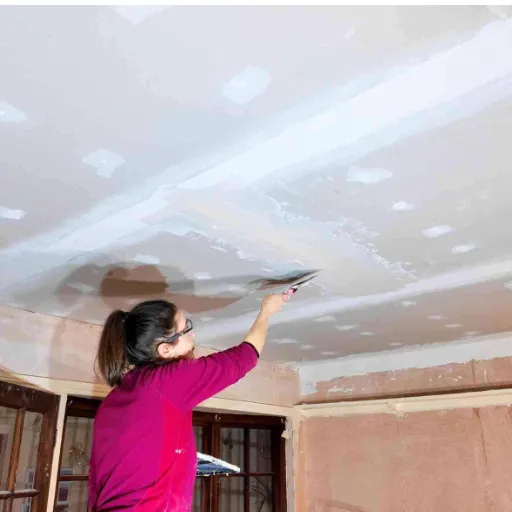
Enhanced Adhesion and Structural Stability
Drywall glue develops superior adhesion by cementing together the drywall and its supporting structure into an enhanced stability array. The adhesive lessens the risk of separation or movement through time given varying environmental conditions. In ensuring firm fixation of the drywall, cracks develop less frequently and incidences of damage caused by natural shifting or vibrations are rarely seen.
Drywall glue, therefore, acts as a co-agent to the mechanical fasteners (screws or nails) by dispersing the load evenly across the surface. With such balanced support, local stress points are avoided, which otherwise would hamper the performance of the drywall. The final result is a structure that is more resilient against wear and tear, thus ensuring a win for any permanent installation.
Another significant advantage is the insulation against noise and vibrations in the structure. Drywall adhesives can act as a buffer by cushioning small movements and vibrations within the building and so improving the soundproofing of any room. All in all, drywall glue improves the structure’s integrity, comfort, and installation of the interior space.
Improved Soundproofing Properties
The soundproofing capabilities of an building can be enhanced immensely by drywall adhesives since they transmit the noise through walls and ceilings. The application of drywall adhesives in the right manner creates a much tighter bond between drywall panels and the supporting framework, thereby minimizing the existence of gaps through which sound can fade into or depart-thus rendering indoor spaces quite idly in their sounds. This is highly welcomed in multi-family residences, office spaces, or areas highly sensitive to sounds.
Drywall glue acts as a cushion against vibrations caused by footsteps, voices, or machinery which can travel unwanted noise through a building. The drywall adhesive materials absorb their vibrations and disperse them, further lowering the noise’s effect and, therefore, creating a quiet atmosphere. This kind of noise inaudibility urge is essential in places like recording studios or conference rooms.
Generally, drywall adhesive seems an inexpensive and pragmatic solution to sound insulation, being able to facilitate the bonding of materials under their influence, undesirable to sound fast track. Therefore, these are functional and lifestyle improvements to have a construction surviving for both exterior force and good acoustics and thus should be one of the first considerations in any project in which soundproofing is involved.
Reduced Fastener Pops in Installed Drywall
Adhesive, when used during drywall installation, will prevent or diminish as much as possible the occurrence of fastener pops. Fastener pops usually develop when wooden framing members undergo the natural expansion and contraction process, or when the fasteners are not appropriately secured, resulting in drywall release from time to time. Gluing up the studs prior to drywall panel installation builds a stronger bond resisting movement and lessening stress on the fasteners.
The adhesive also works to distribute the load evenly across the surface, minimizing the drywall’s dependence on screws or nails to hold it in place. Fasteners piercing through drywall, or fasteners that cause ugly imperfections appearing on the wall finish are things less likely to happen from here on. Glue and mechanical fastening combined together provide a structure that is stable with an impeccable finish on which time will shine.
The adhesive chiefly improves the efficiency of installation. With the application of adhesive, perhaps fewer fasteners might be required, if any. This measure might enable one to save on time but with the security of drywall uncompromised. Also, it takes in vibrations and lessens the creaking noises. It is sometimes not needed, but in general, it is highly encouraged to use drywall adhesive because it improves the strength and beauty of the finished item.
Drawbacks of Using Drywall Adhesive
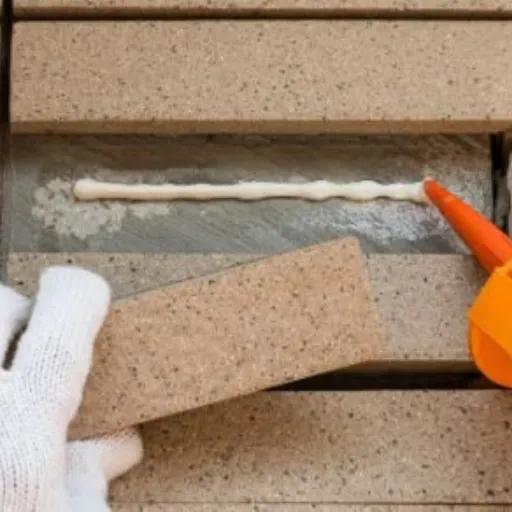
Increased Mess During Installation
Being sticky and viscous in nature, drywall adhesive generally leads to extra mess during installation. When the adhesive is applied, it may spread towards unintended areas or drip onto side surfaces and require extra cleaning effort. If installing inside tight spaces or up on ceilings, staining side surfaces and floors from adhesive splatter is especially problematic-the zipping droplets of adhesive defy neatness.
The application process adds another layer of complication. If one failed to apply the adhesive evenly and practiced careless application methods, the resulting inept substrate patches will not only generate more mess but pose a threat to the efficacy of the adhesive. Hence, the clean-up process may become time-consuming and labor-intensive after application, thereby extending the effort beyond that involved in mere use of fasteners.
This might actually be a blessing in disguise as, with good planning, the mess produced during installation is manageable. You can cover areas that should not be plagued with dirt, use just enough bonding agent, and always wipe off any excess on the floor or wall before it dries. This drawback is extreme, yet very often, the advantages of using adhesive, including better durability and noise reduction in the final drywall installation, outweigh it.
Perpetuity of Glue: What It Means for Future Repairs
The use of glue for drywall installation surely affects future repairs significantly, given the nature of an intangible atmosphere on the duration of its existence. Adhesive bonds are strong and permanent finishes between two surfaces that make the removal of damaged panels of drywall more difficult, and so are alterations to their future modifications. Unlike screws and nails that mostly permit relative dismantling, with the use of adhesive, the repair works could practically involve extra labor, different tools, or even some removal of the adjacent materials.
Yet, in other cases, its permanence shall become useful: the adhesive ensures drywall remains in place permanently, thus preventing instances of loosening or damage through movement or vibrations. Such a reliable performance decreases the circumstances when lift-loosening needs repairs now and then, hence saving repair time and other resources. Where welding is seen as highly necessary, the glue’s everlasting bonding could be preferred over choosing thin drawbacks.
Still, should repairs become necessary, professionals advocate caution and precision. Taking a blade or knife to cut around the bonded areas, or applying heat just enough to soften the adhesive, reduces the damage thereto. During installation, the client can consider setting specific adhesive lines on hidden surfaces to facilitate modification later. It is important to take into account the advantages and disadvantages of adhesives related to the objectives of the project in relation to their durability and repairability.
Specific Surface Preparation Requirements
Good surface preparation is necessary for proper bonding and long-term durability. Surfaces must be clean and dry. They must also be free of dust, grease, oil, or any other contaminants. Cleaning methods differ depending on the material: it could be a simple washing with mild detergents, degreasing with isopropyl alcohol, or abrasion to eliminate loose dirt or coatings. Such means will ensure the perfect surface for binding.
For non-porous surfaces, such as metals or plastics, light abrasion of the surface can contribute to improved performance of the adhesive by changing the surface roughness and mechanical interlocking. Following sanding or grinding, all dust or debris must be removed prior to applying the adhesive. Some materials may further require a primer for enhanced adhesion, particularly for those hard substrates like low-energy plastics.
One more factor to consider when preparing surfaces will be environmental conditions. Temperature and humidity have an immense effect on adhesive performance. Surface preparation should ideally be performed in stable controlled conditions. In every case, all levels of preparation should be observed to yield a strong, permanent bond.
Step-by-Step Guide to Using Drywall Adhesive
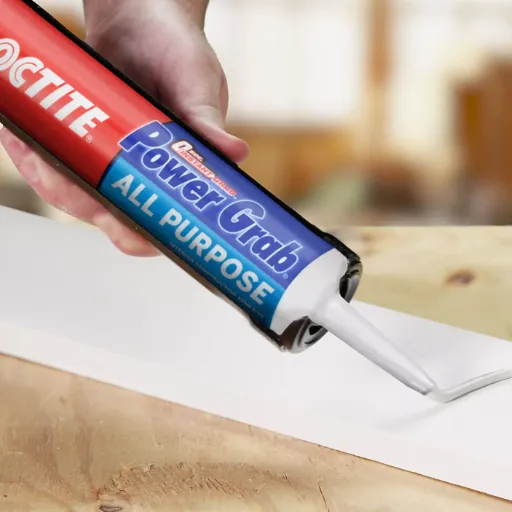
Preparing the Surface for Adhesive
Surface preparation is a must for the guarantee of a lasting adhesive bond on drywall. Follow these steps and precautions to obtain maximum adhesion:
Cleaning the Surface:
Use a damp cloth and a mild cleaner or degreaser and thoroughly wash the surface to remove dust, grease, oil, or any contaminant. There must not be any debris which could prevent the glue from adequately bonding against the surface.
Drying the Surface:
It is imperative to dry the surface after cleaning. Moisture can decrease the bonding strength of an adhesive resulting in long-term failure of the molding. Excess moisture present in a surface will also act adversely toward the curing mechanisms of the adhesive.
Smooth surface need to be roughened:
Smooth surfaces, including particular plastics or painted drywall, could prevent adhesion. Furnish the areas with sandpaper (120 to 150 grit recommended) to gently roughen the surface, giving the adhesive more chance to mechanically bond.
Surface Defects Check:
The surface should be checked for holes, cracks, or unevenness that could reduce the bond strength of the adhesive. Fill in the gaps with patching compound and smooth out these irregularities before applying the adhesive.
Environmental Conditioning:
Be sure the surrounding conditions are suitable for performing adhesive application. Standard conditions would lie between 60 and 80 °F (16-27 °C) with humidity below 70%. Extreme cold or heat affects adhesive viscosity and curing time.
By concentrating on preparation steps, you will find yourself laying the groundwork for a strong and lasting adhesive application. Never forget that the preparation will factor in a multitude of positives onto the adhesion, including reduced potential failures and extended lifespan of the bond.
Applying Adhesive Correctly
Applying adhesive properly is paramount when it comes to the gluing of drywall so that bonding strength, longevity, and diminished chances of the occurrence of problems can be achieved. Usually, drywall adhesive is used in conjunction with screws or nails to develop a more secure and even attachment upon framing structures such as wood or metal studs.
Choosing the Right Adhesive:
Select a heavy-duty construction adhesive specifically designed for drywall installation. Make sure the adhesive shall adhere to both the drywall material and the substrate below, be it wood, metal, or masonry.
Surface Preparation:
Clean and dry the surface before application. Eliminate dust, grease, or any other contaminants from both the studs and the surface to promote adhesion.
Application:
Apply adhesive in evenly spaced strips or large “globs” (if so specified by the manufacturer) directly onto framing members. The general spacing guideline is every 12 to 16 inches along the studs to provide even distribution when drywall is pressed.
Pressing and Securing:
Carefully position the drywall panel and give it light pressure with your hand or a drywall lever so that it is in even contact with the adhesives on the studs. Then immediately fasten the panel with drywall screws or nails placed midway between the Adhesive beads. This two-way fastening stabilizes the panel and prevents the formation of gaps or any movement.
Temperature and Setting Time:
Follow the temperature and setting time requirements as per the manufacturer’s instructions. Most would mention the temperature range between 50°F to 85°F is the best condition for its curing. Kindly ensure sufficient curing time is allowed before proceeding with any further joint compound or painting works.
More recent observations working into the up-to-hours sheet explain that adhesive-bonded drywall reduces the likelihood of nail pops and cracking over time. Additionally, it minimizes sound transmission from one room to another. If correctly applied, the adhesive lessens the fastener count, producing smoother wall edges for aesthetic purposes, while at the same time ensuring long-lasting structural integrity.
Hanging and Securing the Drywall
Drywall installation begins with careful measurement and planning. First, one should measure and cut drywall panels to the particular dimensions of the wall or ceiling. It’s essential to lay down the panels so that they meet at the center of the wall studs to be securely fastened. A utility knife is the tool for straight cuts, while a keyhole saw handles cuts for outlets and switches.
After preparing the panels, you place them onto the studs and fasten them with screws or nails. Seldom are nails used, as screws tend to offer better holding power, and there’s less chance of drywall being damaged. Put in the screws every 12 to 16 inches along the edges and across the panel so that it bonds tightly to the wall. Drive the nails or screws just slightly below the surface of the drywall, but do not penetrate the drywall paper, for that could lessen the fastening.
After the fastening of panels, the joints between them must be sealed using joint compound and drywall tape for a smooth matte surface. Just an inch or two of joint compound is spread onto the joint; it has to be embedded with the tape and then coated with another set of compound layers while feathering out the edges for an even finish. After drying, finish off by lightly sanding the surface, and then proceed to primer and paint. The right kind of installation assures beauty and durability over time for the drywall.
Essential Tools and Materials for Drywall Installation
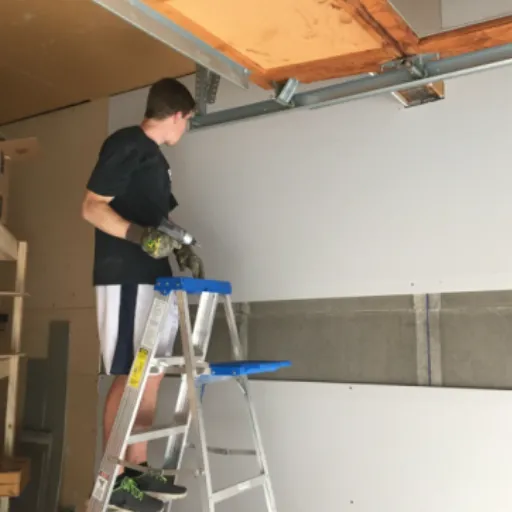
Adhesive Types: Construction vs. Specialized Drywall Adhesive
When selecting adhesives for drywall installation, an important factor in maximizing results is to be familiar with the differences existing between construction-grade adhesive and a specialized drywall adhesive.
Construction Adhesive:
In their multipurpose nature, construction adhesives glue anything from wood, metal, plastic to drywall. Polyurethane-based or solvent-based and usually distributed in cartridges for use in caulking guns, construction adhesives offer adhesion and flexibility whereas they do not fit well in drywall applications. They may, however, still be used in instances requiring greater adhesion, such as when adhesive is applied to an uneven substrate against which drywall is to be set.
The Specialized Drywall Adhesive:
Other way of putting it is that specialized drywall adhesives are formulated to bond drywall with wood or metal studs, concrete, and masonry. Such adhesives are usually water-based and provide for a very high initial grab, reducing the need for screws and nails in some cases. They are made to minimize shrinkage, thus reducing the possibility of cracks or gaps. Lately, many specialized drywall adhesives are low-odor and environmentally friendly, which also allows for indoor usage.
Uses of Each Type:
| Adhesive Type | Best Uses |
|---|---|
| Construction Adhesive | For heavy-duty projects where the drywall needs to bond with multiple types of materials. Also for areas of high moisture or fluctuating temperature. |
| Specialized Drywall Adhesive | Best when doing standard drywall installations, especially where accuracy, efficiency, and a perfect finish are of utmost importance. This adhesive is usually chosen for residential and commercial works that focus on environmental sustainability. |
Safety Gear and Equipment Needed
Before any work with drywall adhesive begins, the desired safety gear should guarantee one’s safety and comfort throughout the project. Gloves should be worn to avoid skin irritation from contact with the adhesives. Safety glasses should be worn to keep splashes or dust out of the eyes. A dust mask or respirator should always be used when sanding or if working is done in poor ventilation environments, so as to avoid inhaling fine drywall particles.
Also, the choice of work boots should have anti-slip soles that provide the needed grip on floor surfaces potentially made slippery. Long sleeves are another option worth considering as they will guard your skin against possible adhesive spills or dust exposures. Use hearing protection when using loud tools such as drills or sanders.
The right tools, aside from safety equipment, help with trouble-free work and accuracy during the project. One should use a caulking gun for the even and efficient application of adhesives; also keep a utility knife or some cutting equipment at hand for adjustments, if required. Good lighting and organized work cobbles go a long way to diminish hazards and encourage steady workflows.
Additional Tools for Installation
When starting with installation work, the right extra tools may do wonders for the process. Measuring tapes are a must to get exact and accurate measurements to cut or put the materials. Incorrect measurements might result in wasting materials or time, or both. Similarly, the use of a level is needed to ensure that surface installations are indeed accurate in placement and orientation. If something is not level in terms of visuals and functionality, it will pose considerable difficulties.
Screwdrivers of all types, along with a hammer, served as the ultimate tools to fulfill various needs where fastenings and assembly were involved. Carrying out said tasks might entail working nails in place, carrying screws, etc., in all stages of the installation. On the other hand, pliers will always be handy in situations where gripping, bending, or cutting of wire or material has to be done, giving their use in various other ways.
Lastly, a straightedge or ruler helps in sketching guidelines to ensure precision when materials are being cut or aligned for installation. Having these tools at your fingertips facilitates the process and fuels success in completing your project by working smoothly through. Staying organized with these tools reduces the possibility of getting things wrong and streamlines the workflow.
Frequently Asked Questions (FAQ)
Q: Should drywall be glued or screwed?
A: Many contractors choose the glue-and-screw approach. Using glue can further support the drywall, whereas screws fasten the drywall to the studs. This ensures the minimum possibility of screw pops and better durability for the installation.
Q: What are the advantages and disadvantages of using glue on drywall?
A: On the pros, better adhesion, less chance of sagging, and better soundproofing are found. On the cons, a more difficult removal procedure and the possibility of breaking the paper on the drywall might arise. Assessing these factors can allow you to decide whether to glue drywall.
Q: Is it possible to glue ceilings with drywall adhesive?
A: Absolutely, it is common practice to glue ceilings using drywall adhesive, especially when installing ceiling sheetrock. This kind of technique will help keep the drywall in place, reducing possibilities of deflection with time over larger spans such as ceiling joists.
Q: What is the best glue for drywall?
A: Liquid Nails or foam adhesives are widely used in applications for setting drywall. The adhesives create very strong bonds that can effectively hold the drywall in place. Still, it is best to couple the use of these adhesives with screws.
Q: Does gluing affect drywall installation cost?
A: The price of glue also comes to add to the expenses of drywall installation. However, adhesive could help reduce labor time since it prevents problems like screw pops and the need for further fasteners, which could lessen its actual value.
Q: Do drywallers recommend gluing together drywall?
A: Most drywall contractors recommend some use of glue in conjunction with screws for the best installation. The method uses the essence of adhesion and mechanical fastening to make an installation more rigid and reliable.
Q: Is gluing drywall onto framing against building codes?
A: If done properly, gluing drywall to framing may indeed be allowed within building codes. The local bodies of regulation must be observed to determine if the installation is safe and effective, and especially so with respect to moisture content and vapor barriers.
Q: If drywall starts to sag, what can you do?
A: First, check the support, which means joists and studs, when drywall sags. Then, more screws can be added, or the drywall adhesive can be reapplied so it helps to hold the drywall. When the sagging becomes quite pronounced, one may have to seek the advice of a professional drywall installer.
Q: How do I minimize nail pop-ups on my drywall?
A: To minimize nail pops, try using screws instead of nails, since screws grant a better hold. Also, drywall glue will help to keep the panels firm and thus lessen movement that causes nail pops.
Q: Should I use adhesive in place of screws for drywall installation?
A: Adhesives can work well, but I wouldn’t trust their performance if used alone. Generally, screws complemented by adhesives are preferred for drywall installation to ensure a finishing good enough to stand through time and avoid voids and sagings.
References
-
Master Building Materials: Pros and Cons of Using Glue to Hang Drywall – Discusses the benefits, such as soundproofing, and other considerations.
Contractor Talk: Drywall – glue or no glue? – A forum discussion on when and why to use glue alongside screws.
Angi: Pros and Cons of Drywall Glue – Explores the advantages of drywall adhesive, like reducing sound transmission.
Garage Journal: Drywall Glue – worth the time and money – Evaluates the cost-effectiveness and added strength of using glue.
Drywall Talk: Verdict on drywall adhesive vs. screws – Provides insights into the cost and practicality of using drywall adhesive.
















